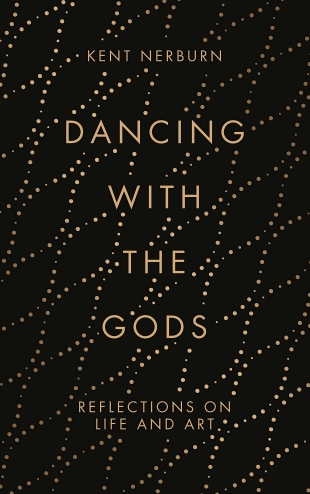Participating in a sweat lodge on his sixtieth birthday at the invitation of some Lakota friends, Kent Nerburn expressed his heart's desire: "to learn how to become an elder." Reflecting on this later, he noted: "I had spent thirty years living the life of the writer, and twenty before that as a practicing sculptor. I knew the heart of the artistic life — its dreams and fears, its unbroken challenges, and its unexpected rewards." This book is one way he is sharing what he's learned about living the life of an artist.
We have spent nearly 50 years delivering resources for those on spiritual journeys, and we have focused primarily on the wisdom we have discovered in the arts and the media. Our life mission connects with Nerburn's in many ways, and we have treasured his work over the years. We three (we're sure Kent would agree) express our spirituality when we come alive — and whereas this may happen during our devotional activities, it most often occurs in the activities of daily life — walking in the natural world, caring for an animal, finding ways to be kind to our friends and neighbors. And loving and creating art.
In Dancing with the Gods, Nerburn demonstrates the process in which art has expressed itself through his sculpture and writing. The frontispiece quotation establishes the focus:
Art is a spiritual pursuit
It is wrestling with the angels
It is dancing with the gods
The book is divided into sections on:
- The Journey Begins: meditations on finding a vision, learning your craft, having the courage to fail, and seeking excellence.
- The Hard Places: commentaries on the need for patience, the appearance of doubt, the pain of rejection, the harsh reality of criticism, the toll of money on the creative spirit, and the false idols of success and recognition.
- The Hidden Secret: insights into the psychic connection between artist and audience, the line between discovery and mastery, the magic of accident and faith in the unknown, the art of making appropriate choices, the hard decision to leave works behind, and the art inside your art.
- The Unseen Joys: notes on collaboration, gifts from other arts, the bond between artists, dreams of a better world, the value of art, and the power of art to keep the heart young.
With his usual mix of ideas, personal stories, and deep philosophical analysis, Nerburn displays his enthusiasm for the arts, imagination, and creativity in every section of the book. Many times — and we predict you will have this experience too — we felt he was speaking directly to our situation. We have had to make crossroads decisions about what is ours to do; we have suffered the yearly angst over budget deficits and fundraising appeals to make the case for our ministry in the arts and media. And yet, like Nerburn, we have rejoiced in the freedom, the fulfillment, and the joy of a life in the arts.
Here is the way Nerburn puts it:
"To affirm, to articulate, to console, to inspire — these are the great gifts of the arts. They let the light shine through the confusion of life and remind us that there is something more — a mystery that can only be touched but never understood.
"But above all, they provide the greatest gift that any experience can offer.
"They tell us that we are part of the human family"
